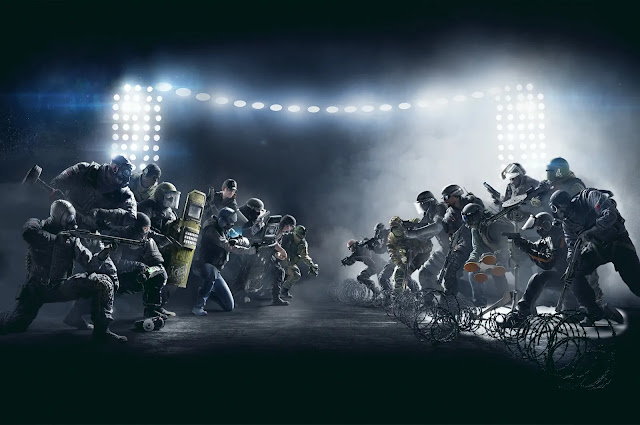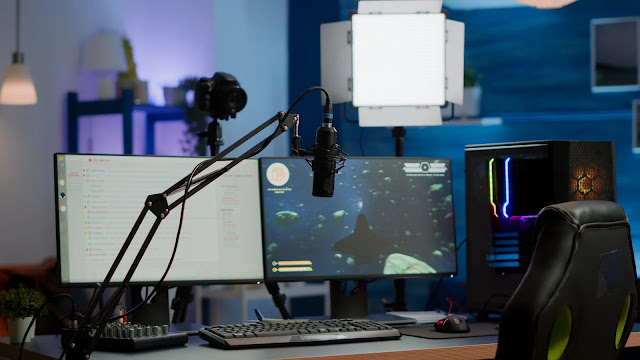AMD vs Nvidia: Which Brand Reigns Supreme in Gaming?
In the world of PC gaming, the battle between AMD and Nvidia has been ongoing for years. Both brands have established themselves as leaders in the graphics card industry, providing gamers with powerful hardware to enhance their gaming experiences. But which brand truly reigns supreme in gaming? In this article, we will delve into the world of AMD and Nvidia, comparing their graphics cards based on performance, features, pricing, user experience, and future prospects. By the end, you'll have a better understanding of which brand may be the best fit for your gaming needs.
Introduction to AMD and Nvidia
AMD Graphics Cards Overview
AMD, short for Advanced Micro Devices, has been a key player in the graphics card market for decades. Their Radeon graphics cards are highly regarded for their excellent performance and value. With a focus on affordability and innovation, AMD has garnered a loyal following among gamers looking for powerful GPUs without breaking the bank.
Nvidia Graphics Cards Overview
On the other hand, Nvidia has established itself as a leader in the gaming industry with its GeForce graphics cards. Nvidia's GPUs are known for their exceptional performance, advanced features, and cutting-edge technologies. While they often come at a higher price point, Nvidia's reputation for delivering top-tier gaming experiences has made them a preferred choice for many gamers.
Performance Comparison in Gaming
Graphics Performance and Frame Rates
When it comes to gaming, graphics performance is crucial. Both AMD and Nvidia offer powerful GPUs capable of delivering stunning visuals and smooth gameplay. Benchmarks and real-world testing can help gauge the performance of their graphics cards, considering factors such as the number of CUDA cores, memory bandwidth, and clock speeds.
Power Efficiency and Thermal Performance
Efficiency and thermal performance are also important considerations, especially for gamers concerned about power consumption and heat management. AMD and Nvidia have made significant strides in improving the power efficiency of their graphics cards, allowing for quieter operation and cooler temperatures.
Compatibility and Driver Support
Another aspect to consider is compatibility and driver support. Both AMD and Nvidia work closely with game developers to optimize their drivers for the latest game releases, ensuring smooth gameplay and maximum compatibility. Staying up-to-date with the latest graphics card drivers can significantly enhance the gaming experience.
Features and Technologies
Ray Tracing and DLSS Capabilities
Ray tracing, a technology that simulates realistic lighting effects, has become a game-changer in the gaming industry. Nvidia's RTX series introduced dedicated hardware for ray tracing, while AMD's recent GPUs also offer ray tracing capabilities. Nvidia's Deep Learning Super Sampling (DLSS) technology is another feature that aims to improve performance and image quality.
Software and Developer Support
Software support and collaboration with game developers are critical factors that can impact gaming performance and optimization. Both AMD and Nvidia work closely with developers to provide software tools, APIs, and libraries that enable developers to harness the full potential of their GPUs.
Overclocking and Customization Options
Enthusiast gamers often enjoy the ability to push their hardware to its limits. Overclocking, which involves increasing the clock speeds of the GPU, is a popular practice. Nvidia and AMD offer various software utilities that allow users to overclock their graphics cards, unlocking additional performance if done correctly.
Pricing and Value Proposition
Price-to-Performance Ratio
Pricing is a significant consideration for gamers on a budget. AMD typically offers more competitive pricing, providing solid value for gamers looking for performance without spending a premium. Nvidia, on the other hand, tends to position itself in the higher price range, offering premium performance and advanced features for enthusiasts willing to invest.
Availability and Market Competition
Availability is another factor to consider when choosing between AMD and Nvidia. Both brands can experience periods of high demand and limited stock, especially during product launches. However, market competition can also influence availability. Understanding the current market landscape and considering the availability of different models and variants can help ensure that you can get your hands on the desired graphics card.
Long-Term Investment Considerations
Investing in a graphics card is a long-term decision for many gamers. When comparing AMD and Nvidia, it's important to consider their respective product roadmaps, as well as their commitment to supporting older hardware. Nvidia has a strong track record of providing long-term driver support for their GPUs, while AMD has also improved in this aspect. Evaluating their dedication to ongoing support and compatibility can be crucial for ensuring the longevity of your investment.
User Experience and Customer Satisfaction
User Reviews and Feedback
One of the best ways to gauge the user experience of AMD and Nvidia graphics cards is to explore user reviews and feedback. Online communities, forums, and review platforms are great sources of information. Pay attention to user experiences related to performance, stability, software, and overall satisfaction. Keep in mind that individual experiences can vary, so it's essential to consider a wide range of opinions.
Reliability and Product Durability
Reliability and durability are vital factors when investing in a graphics card. Look for information on the build quality, cooling solutions, and overall reliability of the GPUs. Consider factors like warranty coverage and customer experiences with product longevity. Reliable and durable graphics cards are crucial for uninterrupted gaming sessions and peace of mind.
Customer Support and Warranty Services
In case you encounter any issues or need assistance, reliable customer support and warranty services can make a significant difference. Investigate the level of customer support provided by both AMD and Nvidia, including response times, helpfulness, and the availability of resources such as driver updates and troubleshooting guides. A brand that offers excellent customer support can ensure a smoother experience throughout your gaming journey.
Future Prospects and Innovations
Roadmaps and Upcoming Product Releases
Keeping an eye on the roadmaps and upcoming product releases of AMD and Nvidia can provide insight into their future prospects. New product releases often introduce advancements in technology and performance. Understanding the direction each brand is taking and their commitment to innovation can help you make an informed decision.
Advancements in GPU Architecture
GPU architecture plays a significant role in the performance and capabilities of graphics cards. Both AMD and Nvidia continually work on advancing their GPU architectures to deliver improved performance, power efficiency, and features. Staying informed about the latest advancements and understanding how they translate into real-world gaming benefits can help you anticipate future trends.
Industry Trends and Technological Advancements
The gaming industry is ever-evolving, and keeping up with the latest industry trends and technological advancements is essential. Look for developments like new rendering techniques, virtual reality, and cloud gaming. Consider how each brand aligns with these trends and whether they are poised to leverage emerging technologies effectively.
Conclusion
In the realm of gaming, the rivalry between AMD and Nvidia has captivated gamers worldwide. AMD offers solid performance at affordable prices, with a focus on power efficiency and ongoing driver support. Nvidia, on the other hand, excels in raw performance and provides advanced features like DLSS and comprehensive ray tracing capabilities. The choice between the two ultimately depends on individual gaming needs, preferences, and budget. By considering factors such as performance, compatibility, user feedback, customer support, and future prospects, gamers can make an informed decision and select the GPU brand that suits them best.




Comments
Post a Comment